A “Flying Whale” over the Black Sea: Martin B-10 Model 139WT in Turkish service
When in 1934 an icon like General Henry "Hap" Arnold enthusiastically declared the Martin B-10 to be "the air power wonder of its day", this was tantamount to elevation to the rank of aeronautical nobility. What exactly led Arnold to this favourable judgement will have to be described later, but one thing can already be said here: the B-10 was indeed a "miracle"!
On the one hand, its top speed exceeded by far not only that of all contemporary bombers but also, remarkably, that of all fighter aircraft of the time. Secondly, it was a miracle of technical innovation. In its design, for the first time, was trained what from now on would be the standard of subsequent bombers. Innovations were, for example, the introduction of a powered gun turret - this, by the way, at the same time as the British Boulton Paul Overstrand, an aerodynamically otherwise extremely unclean design - the completely closed cockpit for the entire crew, the installation of completely covered engines and, last but not least, the retractable landing gear.
However, it all began with a design that was in some respects still linked to the old way of thinking. In 1932, the "Model 123" had been conceived at Glenn Martin as a private proposal for a future bomber. A crew of four still sat in uncovered cockpits, the two Wright SR 1820 engines still sat rather clumsily in front of the wing edge, only covered with a Townend ring typical of the time. However, the design already showed the internal bomb bay and a retractable main landing gear.
After testing by the US Army, the design was revised at Martin and then offered again to the USAAC as the XB-10 with all the aforementioned forward-looking innovations. When the subsequent testing revealed the remarkable potential of the B-10, the US Army did not hesitate any longer: in January 1933, an order was placed for a pre-production series of 48 YB-10s.
The crew of the revised B-10 was reduced from originally four to three men, and there was also a substantial increase in power: from now on, two 775 hp Wright R-1820-33 radial engines were installed.
If one looks at the characteristics of the B-10 against the background of comparable contemporary aircraft, the sensational leap in quality becomes clear. The top speed of the bomber, which was not too big with a wingspan of 21.5 metres and a length of 13.6 metres, was measured at 346 km/h. The maximum take-off mass was 7740 kg. The maximum take-off mass was 7740 kg, with an altitude of 7390 metres. The range could score with a highly respectable 2200 kilometres.
Until 1936, a total of 121 B-10s were delivered to the US Army, which served reliably in all the USAAC and USAAF theatres of operation until they were replaced by more modern models such as the B-17 Flying Fortress or the B-18 Bolo. As well-known and widespread as the B-10 was, the popular name coined by Martin did not catch on - which was perhaps fortunate: it would have been the rather uncharming "Flying Whale".
The B-10 was only used in war under the flag of non-American nations. By 1936, the export ban had been lifted, allowing the B-10 to be sold worldwide in numerous export variants. For example, the Netherlands bought 39 aircraft, 34 went to Argentina, 9 were delivered to China and in 1937 Turkey joined the clientele with a purchase of 20 B-10s.
The Dutch initially used the B-10 in the Far East against the advancing Japanese, but against the Zero, the former wonder proved to have no chance. B-10s flew against the same enemy in China. Here the bomber faced a losing battle until literally the last of the nine B-10s delivered had broken up in July 1938.
It is remarkable in this context that Chinese B-10s were the first enemy aircraft to "attack" or fly over the Japanese mainland. All available B-10s had taken part in a spectacular operation to drop leaflets over the cities of Nagasaki, Fukuoka and Kurume on the night of 20 May 1938, together with other Chinese aircraft. Their mission was to inform the Japanese population of the horrific war crimes being committed by the Japanese invaders in China.
However, my model shows a B-10 Model 139WT in Turkish service. In 1941/42, these aircraft were deployed with the 55th Squadron of the Turkish Air Force to secure the country's neutrality in the maritime area of the Black Sea. The unit was stationed at Corlu, just west of Istanbul. The spectacular orange topside is thus explained as the striking colour of a neutral third.
To bring this overview of the history of the B-10 "Flying Whale" to a close: General "Hap" Arnold had a good reason to make the assessment of the B-10 reproduced at the beginning: in 1934 he led a formation of ten of the new B-10 bombers from Washington D.C. to Fairbanks, Alaska and back again, a total distance of 13 341 kilometres. This flight had been organised in order to be able to demonstrate the potential of the new long-range bomber to the domestic and foreign public in a press-effective manner.
About the kit
One thing first: throughout the entire building process of this rare aircraft, the good mood of the model builder was a common thread, which goes back to qualities such as sensible parts layout, passable fitting accuracy or a coherent level of detail.
This is probably also due to the fact that the kit forms are quite young: only in 2020 did Azur bring completely new forms of a B-10 onto the market, further editions of this very varied model followed.
In 2021 Special Hobby took on this kit and offered it with its own marking variant for Thai, Chinese and Turkish aircraft. In addition, there was a sheet with masks for the clear parts; in view of the many clear parts, I would highly recommend this extra accessory.
The construction of the fuselage is unusual, but proves to be a well thought-out solution to be able to represent the fuselage sections made of corrugated sheet metal. The fitting accuracy proves to be good, even if not perfect; putty and sandpaper should always be within reach.
I have replaced a few parts. The two pitot tubes were made from wire and parts of needles, as well as the exhaust pipes, which were made from hollowed out cable insulation. Cockpit and undercarriage legs got some etched parts like seat belts or brake cables, also the radial engines were equipped with ignition cables.
When attaching the canopies, rough misfits have to be taken into account. The construction photos show, how I have putty on the finished model. This is not a tragedy, but should be taken into account.
The most time-consuming part for me personally was the application of the orange top. Due to the nature of the paint, this had to be done in several layers. In addition, the orange paint surface proved to be very delicate and tricky when it came to masking the aluminium areas. After removing the masking tape, disturbing surface changes appeared on the orange, it had to be sanded and painted again.
The decals of the kit can be trusted without hesitation; wonderfully thin and yet tear-resistant, the application and positioning was a pure joy.
Once again I can say: this construction has brought me not only modelling pleasure but also an entertaining increase in experience! It is nice that such beautiful and not too well-known designs are available in such high quality. The completed model increases the amount of orange in my display case enormously.
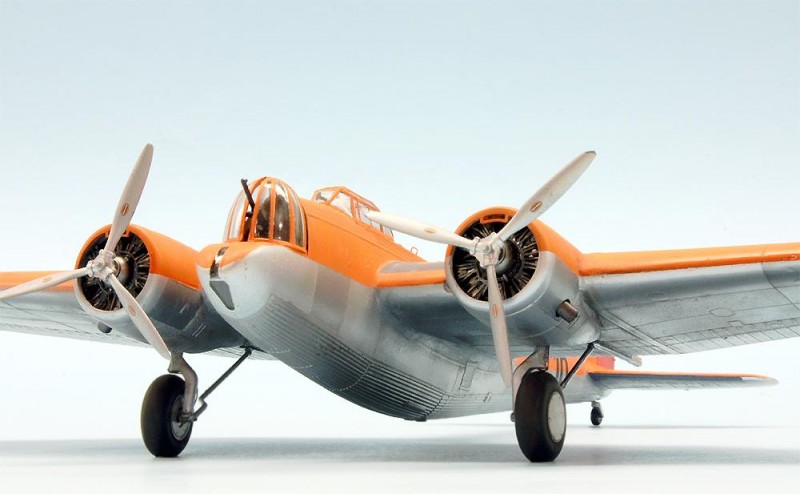
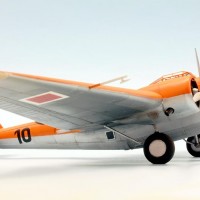
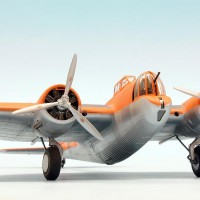
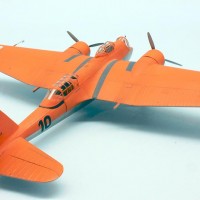
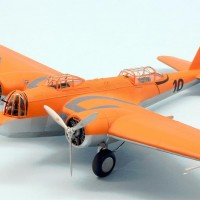
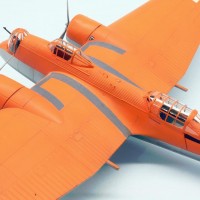
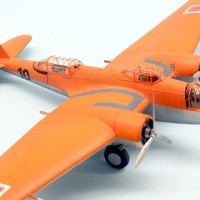
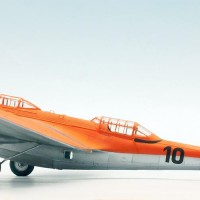
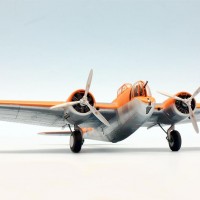
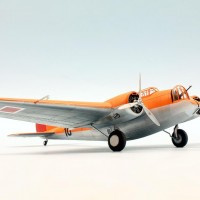
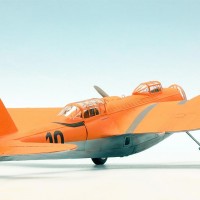
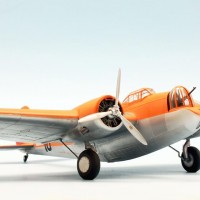
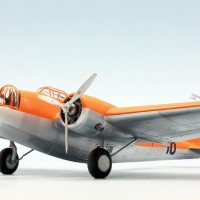
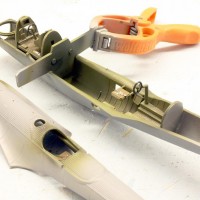
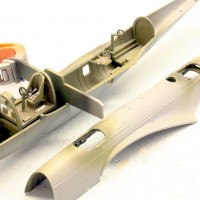
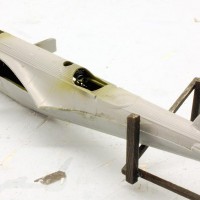
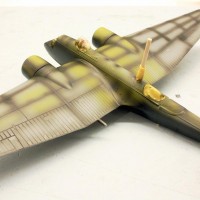
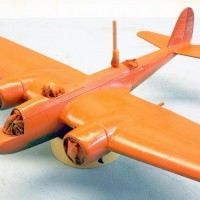
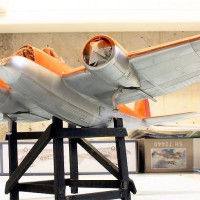
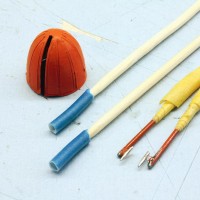
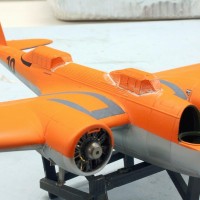
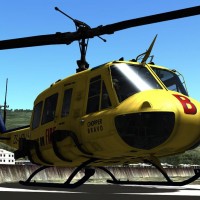
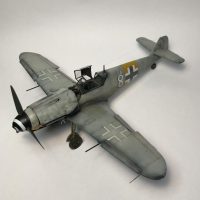
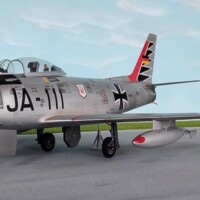
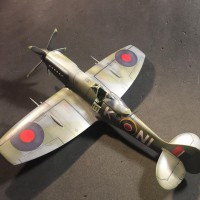
Excellent model, Roland, very rarely seen! Congratulations on tackling this challenging kit.
The accompanying article was a joy to read.
Well done!
This excellent build just makes me want to take out and start building my copy.
Striking color. This is one of my favorite aircraft, and you covered it quite well.
I'd swing for that one resin kit they have in 1/48, but I'm on the fence.
What a beautiful build, Roland @rosachsenhofer
An uncommen build in an equal uncommon scheme.
Great article as well.
Really nice work on this, Roland. As @dbdlee said, inspirational to pull out my copy.
Great looking model.
Excellent work as usual, Roland. I really like the bare metal undersides as well as the striking orange paintwork. I wasn't aware of the history of this aircraft. Very interesting detail about the leaflet raid on Japan. Your build has really helped to memorialize this aircraft. I feel a Chinese Air Force version might be well worth doing some day.
Very nice Roland! Two thumbs up! 🙂
I love these colors, Roland (@rosachsenhofer). I have built the Williams Brothers kit of this plane, but it looks like this one is a real improvement. Well done.
Beautiful build of a historically significant but overlooked subject. I am still waiting for some mainstream company to release this in 48th scale. Love the colors, very unusual and definitely catches the eye.
Some thing unusual, Great job!
Yet another great post, I don't where you find the time, definitely liked.
Ok - I have to get one of those! I didn't realize the B-10 flew in other than US livery (and didn't much care for pre-war colors), so now I've got some alternatives. Great looking model!
Excellent build and write-up.
Thank you all for your interest -and for your supportive and inspiring words!